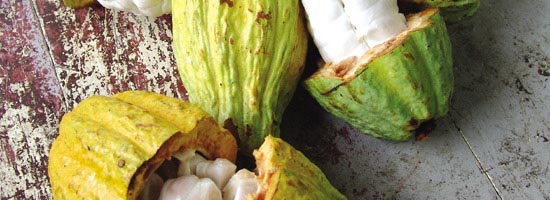Food is a universal language that brings people together and chocolate is the harness. Its scientific name is ‘theobroma cocoa’, cacao or cocoa, which in its processed form as a gift or a treat, brings smiles all year round, through its sensual air and succulent sweetness.
As a hot beverage, chocolate has been the cure for all sorrows for as far back as I can remember. Simply waking up to its rich aroma, seasoned with spices such as nutmeg, cinnamon or vanilla was enough to give the notion of a good day ahead, certainly in Jamaica where “chocolate trees” are quite common in many rural backyards of hilly and cooler climates.
The tree bares an oblong pod-like fruit with a hard and rugged outer appearance. Inside these pods lay a sweet, yet tart, white pulp with a sticky, syrup-like consistency and roughly 30 – 40 extremely bitter seeds.
“Chocolate Tea”
As children, we enjoyed eating the white pulp as much as I imagine our parents relished using the seeds to produce “chocolate tea”. Reverend Audrey Knott, Home Economics teacher at the Oberlin High School in rural St. Andrew, recounts the process she enjoyed as a child and still practices today; “After the pod of the chocolate fruit is broken, the pulp is removed and the seeds are parched in the sun -usually over a five day period, depending on humidity- allowing the seeds to dry, so that the silver skin can easily be removed.
To continue reading , purchase Vol. 7 #8 2015 issue

